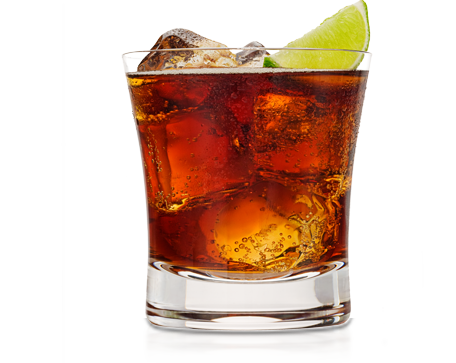Cuba libre!
Post on: 26 Май, 2015 No Comment

Destinations
Stepping off the plane in Havana is like stepping into 1963, where cars have fishtails and the buildings are colourful reminders of a not-so-distant colonial past. The sun is always shining and one is never more than five feet away from a refreshing rum cocktail and an exquisite hand-rolled cigar.
But a cold glass of Coca-Cola and a wi-fi hotspot are considerably more difficult to obtain.
Cuba is a country of contradictions: it has a 99.8 percent literacy rate, the highest ratio of doctors per capita in the world, but an internet penetration of no more than three percent; the country’s population is young and active, but the average age of its governing officials is 80.
When Fidel Castro stepped aside in 2008 after 50 years in power, and his brother Raúl assumed his position, many saw it as a sign of decline for the socialist regime. Five years later, this seems to be the case. Castro the younger, in the prime of his 81 years, has recently announced a string of measures aimed at improving the economy and reviving his party.
He wants to make it easier for Cubans to run businesses and is investigating the practicalities of imposing age limits for high-ranking officials and term limits for politicians. And while they might sound like small steps, they are significant steps. Though few of these measures have garnered significant media attention, Castro has so far rolled out approximately 300 of them, from lifting travel restrictions for Cubans wishing to go abroad, to easing the bureaucracy involved in starting a business.
Cubans can now easily obtain business licenses if their business is one of 178 approved trades, including barbers and fruit peelers
For over half a decade Cuba has persevered with an economic model abandoned to failure by the rest of the world, and as a result the country still struggles to produce items that were commonplace before the revolution − there have even been reports of Cubans bringing back toilet paper from rare trips abroad. As the nation stubbornly sticks to its state-run model, it falls ever behind countries like China and Vietnam, who were not afraid to invest in infrastructure and encourage entrepreneurship, evolving a form of market socialism.
Socialist economies
Cuba’s GDP expanded 1.5 percent in 2010 (the last available figures), and while that might sound like an average result for a year when the whole world was struggling, it was significantly behind other so-called socialist economies. Vietnam grew 6.8 percent, while China expanded by a comparatively exorbitant 10.3 percent. Meanwhile, the average monthly wage for a Cuban worker is a meagre $20. These are not encouraging numbers.
“Most of Cuba’s domestic industries are operating below capacity,” explains Raj M Desai, a political economist at the Brooking’s Global Economy and Development programme. “Labour productivity is low relative to the skill and education of the workforce. Cuba’s overall debt is 40 percent of the gross domestic product, excluding what it owes in expropriation claims. By most living standards, Cuba has made little progress in the past 20 years.”
It will certainly be a challenge for Castro, as he battles to reverse this downward spiral of low productivity and high debt. Cubans are very dependent on the government and part of his plan to move forward is to sever that dependency. This will mean laying off up to a million public sector workers and stimulating the private sector. It will be unpopular, but it might just turn the tides for the Cuban economy. “The pilot programme will convert 222 state-owned companies into worker-run cooperatives,” explains Nick Mirrof, Cuban correspondent for the Global Post. “The government will maintain ownership of the company’s physical property and charge rent to the cooperative, but members will determine their own hours, pay and leadership.”
In another attempt to revive the private sector, Castro has been busy approving ‘new’ professions. Cubans can now easily obtain business licenses, but only if their business is one of 178 approved trades and occupations, including barbers and fruit peelers.
According to Richard Bercherer, a professor at the University of Tennessee researching Cuba’s private sector, there are two ways for a Cuban worker to become an entrepreneur.
“One is by creating a job for yourself – becoming the guy who cuts the grass and that sort of thing,” he told Al Jazeera. “The other option that really helps the economy is allowing someone to create a company that has intrinsic value. Those are the ones which really create jobs.”
The issue with Castro’s job liberalisation, according to Bercherer, is that the jobs Cubans are now free to pursue are not in themselves entrepreneurial, and will therefore not help to create jobs for the workers losing their government positions. However, that is not universally true; one of the labour reforms put forward by Castro has allowed the creation of companies that sell products straight to hotels, enabling the population to reap the benefits of an increased tourist influx.
In fact, tourism has quickly risen to become one of the most profitable industries in Cuba.
Trendy hotels are popping up in Havana or along the island’s many sandy beaches. In 2009, President Obama lifted restrictions for Cubans to visit relatives in their homeland; in 2011 further concessions extended a Cuban jaunt to even more Americans. There are still many restrictions – tours must be approved by the Treasury Department’s Office for Foreign Assets Control – but interest in the country has sky-rocketed.
By lifting the ban on buying and selling real estate Castro has opened the country to two potentially lucrative industries: real estate and construction
Encouraging signs
In 2011 over 2.5 million tourists flocked to the island, including 900,000 Canadians and 100,000 Americans. Tourism is a huge growth market for Cuba, its Caribbean location, proximity to the US and warm climes make it an ideal holiday destination, and the island’s pristine beaches appeal to sophisticated travellers and budget holidaymakers alike. Castro has not yet allowed foreigners to own property on the island but by lifting the ban on Cubans buying and selling real estate, he created the opportunity for locals to open new hotels around Cuba, and with it boosted the country’s potential.
Before 2012, Cubans could only trade or donate their dwellings – there was an outright ban on all property sales. By lifting this, Castro has opened the country to two potentially lucrative industries: real estate and construction. When the law was changed television news presenters began to read out the list of properties that had become available for private sale. Cubans are still only allowed to own one property, to prevent speculation, but the market is certainly growing.
But like many of Castro’s reforms, there have been teething problems. Properties in desirable locations have been advertised online for hundreds of thousands of dollars, completely disproportionate to the average wage earned by a Cuban, suggesting that a lot of the capital for real estate purchases is coming from relatives sending money from abroad. “There are all sorts of distortions,” explains Omar Everleny, head of the government-run Centre for the Study of the Cuban Economy, at the University of Havana.
“The government can’t wait until a state worker can afford to buy a flat. You need
to open up the possibility first, then reach the point where workers’ salaries cover a deposit, at least. The main thing is that people have another weight lifted from their shoulders, another prohibition.”

But there is some question of how willing Cubans are to participate. “Try telling a Cuban: ‘You should pay higher rent, or pay for your own healthcare.’ Cubans moan, like citizens everywhere, but there is no serious opposition to the current government,” says Saul Landau, a Cuban professor and filmmaker.
“I don’t think anyone knows how many Cubans want change and how many want the same thing,” adds Roger Betancourt, professor of economics at the University of Maryland.
Many of Castro’s reforms will entail cultural shifts. Cubans enjoy free healthcare of a very high standard, wonderful state schools and receive food and rent vouchers from the government. Dismissing people from their safe state jobs and devolving responsibility to the citizen may not prove popular.
Comparisons with China, Vietnam and even Russia have hounded Castro’s plans since he announced them. China and Vietnam in particular are viewed as socialist economies that have succeeded. But while western academics might be inclined to lump economic liberalisation with political opening, this is not always the case. “China’s reform experience has been used to demonstrate the advantages of incremental reform – ‘crossing the river while feeling the stones’ in Deng’s memorable phrase – over ‘shock therapy’ or the ‘big bang’ approaches used in Eastern Europe and Russia,” explains Desai.
Economic expansion has little correlation with the haste at which reforms are rolled out. Because Castro’s reforms have come thick and fast, there is growing concern for the type of growth Cuba will experience. Betancourt worries that with rapid liberalisation, the island could end up more like Russia than super-efficient China, as former state officials take advantage of privatisation and become oligarchs. Looking west to the rich oilfields in the Gulf of Mexico has intensified this fear.
Black gold
The US Geological Survey estimates that there are five billion barrels of oil lying in Cuban waters, while Cuban surveys claim an even more generous horde of 20 billion barrels. Brazilian oil giant Petrobras, PDVSA – the Venezuelan state-owned oil explorer – and Spanish company Repsol, have key interests in the region, with the latter contracted to operate a massive platform in the gulf. But developing Castro’s petroleum dreams has not been easy. In 2012 three test drills were carried out without any success, prompting Russian company Zarubezhneft to withdraw. While Castro has tried to encourage oil production in the area, technology available in Cuba is still very limited and there are concerns over the government’s emergency response capabilities in the event
of an accident.
In reality, Cuba is still a long way off being able to compete in the global arena. No matter how much oil Castro eventually unearths, its natural buyer and wealthy neighbour will be inhibited by the notorious embargo. America is the obvious destination for Cuban exports, but the embargo has been in place since 1960, and though the world has changed in these 53 years, the terms of the ban have not. President Obama has signalled that he approves of Castro’s slow reforms, and the lifting of the travel ban for Americans demonstrates that.
But allowing tourists to visit beaches and drink rum on Cuban shores is a long way off lifting the sanctions that will eventually make or break Castro’s plan for progress.
As the US insists on the trade restrictions it goes against its own precedents: Romania, Czechoslovakia and Hungary all had their embargos lifted in the 1970s after reforms similar to those that Castro is pursuing now. More recently the US lifted sanctions against Burma, despite its militaristic government’s continued assault on indigenous populations.
“The cost of the embargo to the United States is high in both dollar and moral terms,” says Daniel Hanson, an economics researcher at the American Enterprise Institute. “But it is higher for the Cuban people, who are cut off from the supposed champion of liberty in their hemisphere because of an antiquated Cold War dispute. The progress being made in Cuba could be accelerated with the help of American charitable relief, business innovation, and tourism.”














